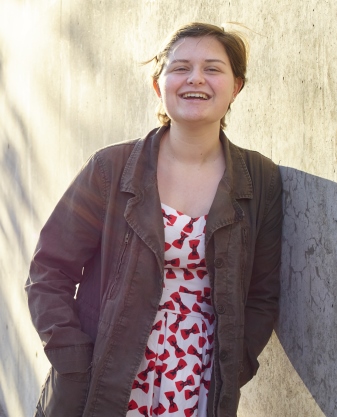By Randy Dotinga

Lauren’s epilepsy has dramatically improved thanks to a high-tech robotic helper.
College student Lauren Redford, an Oceanside native, used to avoid telling people that she has epilepsy. “When they know,” she says, “they tend to pity me and treat me as if I’m fragile.” But now her reticence about her illness has disappeared, along with her symptoms. She’s happy to talk publicly about her appreciation for a dedicated team of professionals at Rady Children’s and their helper, a high-tech robot named ROSA that allowed her to undergo low-impact brain surgery this year.
“I am determined to thank my doctors and the Hospital in any way I can,” says Redford, 18, who is a first-year English major at Adelphi University outside of New York City. “I am doing very well, and the surgery was amazingly helpful.”
Redford was first diagnosed with epilepsy when she was around 7 years old. “All I knew was that I sometimes lost control of my body, and I was in the hospital a lot.” Later, she came to understand that she suffered from complex partial seizures. “Usually when people think of seizures, they’re thinking of the grand mal type, which is like falling on the ground—convulsing, most likely emptying your bladder or bowels,” she says. “Complex partial seizures look more like panic attacks. The person is out of it, staring blankly and muttering, maybe fidgeting a little bit.”
Medications helped control the seizures as Redford grew up. But they often stopped working, requiring her to spend time in a hospital until a replacement drug could be administered. “In December 2014, my medicine stopped working again, so I went to the doctor. But no other medication was helping. I was having seizures while I was awake and while I was asleep,” she recalls. “Finally, one medicine helped me to only have them while asleep, so that was relatively helpful. But I began to be extremely sleep deprived. I was having around seven seizures a night, constantly waking me from my REM sleep. And worse, it didn’t matter what time of the day or night it was, as long as I was asleep, they would happen. I would fall asleep in class all the time, and it sometimes even happened in class.”
She needed a better solution, and the physicians at Rady Children’s went to work. Shifteh Sattar, M.D., medical director of epilepsy surgery, and David Gonda, M.D., a pediatric neurosurgeon, headed up the team working to help her find a new way forward. An operation wasn’t preordained, however. “At first, I was told it might not be possible to do surgery because I have a mutation in my genes that caused the epilepsy,” Redford says. “But thanks to my wonderful doctors, they figured out a way, and I was sent in to have the operation.”
That’s when she encountered ROSA, a high-tech tool that’s revolutionizing brain surgery at Rady Children’s. Surgeons used the robot to treat one of the two sections of her brain that are linked to her seizures. It made a major difference, and she’s doing well, although she may have to take medications for her entire life. “I have not had any symptoms,” she says, “and I am sleeping through the night.”
“ROSA” is short for robotized surgical assistant, a device designed to create 3-D maps of the brain and then act as an extension of the surgeons’ hands. The robot doesn’t perform the surgery itself, but instead assists the surgical team as it treats conditions like epilepsy, tumors, and fluid buildup in the brain. First, it uses scans of the brain to create 3-D images. “The robot knows where everything in the brain is and can point to it,” Dr. Gonda says. “It helps us make plans for what we want to treat and how we want to get there.”
Second, ROSA’s robotic arm holds instruments—tools like drills, laser fi bers and electrodes—and guides surgeons to where they need to go. One of the major benefits of ROSA is that it allows surgeons to perform operations without opening the skull, Dr. Gonda says. In the past, many brain surgeries required a 10-inch-long incision and a temporary hole in the skull about the size of a cookie. Now there’s no need for either. “Instead of a week in the hospital,” Dr. Gonda says, “patients go home the next day, usually with minimal or no discomfort.”
The lack of a large scar makes a big difference for patients—and parents—who are nervous about surgery. “Nobody wants to put their kid under the knife,” he says. “When we show parents that it’s almost like giving a shot, they’re eager to try this.”
It also helps that in many cases, the robot allows surgeries to be performed much more quickly, even shortening operations from 10 hours to two. In Redford’s case, she says she would have wanted to undergo surgery even if it meant a scar. “The robot was like the cherry on top,” she says. “Ever since the seizures began again, I was determined to have surgery, and I wasn’t going to let anything get in my way.”
Published originally in the 2017 Winter edition of Healthy Kids Magazine.